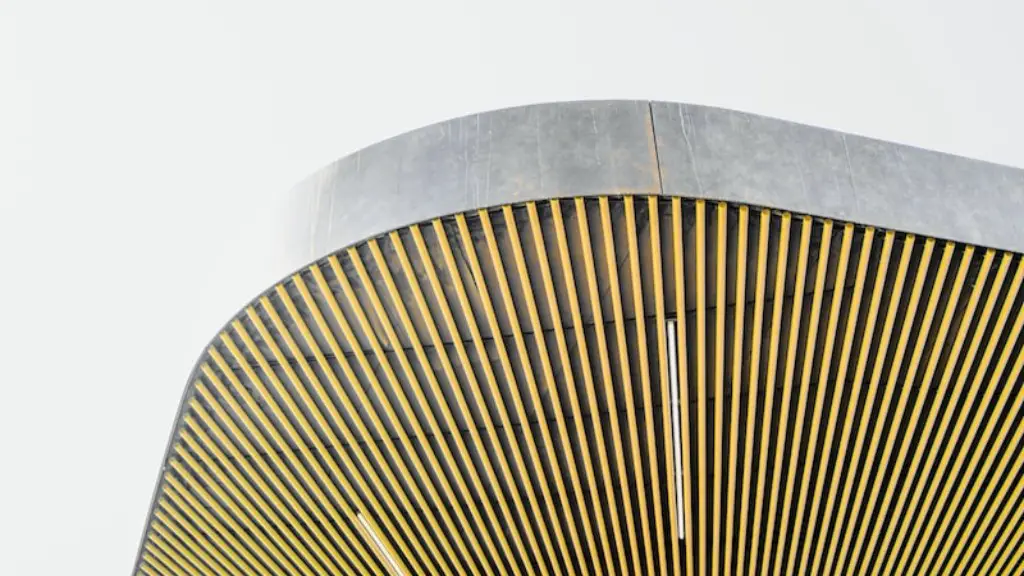1.Start With the Basics
The best way to start improving your drawing skills for architecture is to begin with the fundamentals. This includes perfecting the basics of line drawing and structure. Try working with pencil, marker or even pen and paper and practice basic elements, such as vanishing points, orthographic projection, or even a still life. Taking the time to understand the basics is essential in order to improve your drawings of architecture.
Take your pencils and markers and experiment with how various lines and shading techniques can give the desired effect. Working on line-weight will help you differentiate between areas in an image and give your drawing greater depth. Learning how to use perspective and light to give an image depth will also improve your drawings.
Good observation skills are also necessary for drawing architectural structures. Make sure to look carefully and truly observe the angles, shapes, weights and shadows of a structure you may be trying to draw. Take a sketch pad with you on field trips or when visiting a local museum and make quick sketches of the scenes and structures you observe. This will help you develop a better eye for visualizing architectural elements.
2.Study the Techniques of experienced artist
Take the time to study the techniques and sketches of experienced artists. Looking at the drawings of experienced architectural illustrators can also help you understand the different techniques they use. This is a great way to get an idea of the importance of distinguishing various elements in your drawing, such as perspective, shading, and line weight.
Ways of composition, color and layout can also be studied from artist’s original sketches. Pay attention to the different marks and lines they use to convey their vision to the viewer. Evaluate how the artists positions the subject in the frame and how they are able to use light to create depth in their drawings.
Instead of trying to get it perfect, try to get out of your comfort zone and experiment with different techniques. Remember that as you continue to practice and develop your skills, you will eventually find a style that works best for you.
3.Learn about Lighting and Shadow Techniques
Another aspect that needs to be mastered when it comes to drawing architectural structures is the concept of light and shadow. Pay attention to the way in which light is cast on a surface and how that changes the texture and look of the structure. This will help you bring your drawings to life by providing a realistic and believable effect.
Try to capture the feeling of certain types of lighting, such as natural or artificial. Pay attention to the directional light, the subtle changes in shadow, or even the way a particular surface reflects light. By working on your light and shadow techniques, you will be able to create more dynamic and interesting drawings.
4.Showcase Your Work
Once you’ve developed your skills, why not consider showcasing them? Find a local exhibition or art show where you can display your architectural sketches. Consider putting your work online to broaden your exposure. Alternatively, enter an architectural sketching competition. All of these activities will help build your confidence and increase your public exposure.
5.Explore Digital Drawing Software
We live in a digital age, which means there are an abundance of drawing software tools available for architecture. Get familiar with different drawing software programs such as Sketchup, Autodesk Revit and Blender. Have a look around the web for tutorials and videos about how the software works and start exploring its features for your own benefit.
Using digital drawing tools can help to speed up the process of drawing architecture. Not only do they provide an easy way to create complex drawings, they can also help to save time. Remember that although these programs can help to speed up the process, it is still important to practice your drawing skills and understand the fundamentals of line drawing and perspective.
6.Understand Perspective
Perspective is an important concept to understand when it comes to architectural drawing. Perspective is what helps to create an illusion of depth on a two-dimensional plane. To understand perspective you will need to practice and understand how light and shadow work in an environment and how the eye perceives objects from different angles.
Take the time to practice different angles and perspective. Learn how to represent different views and angles of structures, both with pencil and paper and through digital drawing tools. Perspective is not just about understanding angles and distance, it is also important to ability to depict scenes with a range of emotion.
7.Create a Reference Library
Create a reference library of different types of architectural drawings. This could include drawings of buildings you have visited, photographic studies, and diagrams or sketches of significant architectural features. You can also use other digital sources, such as Pinterest and Instagram for inspiration.
Having a range of references to draw inspiration from is essential when it comes to improving your skills. This will also help to develop your individual style – a style which will be uniquely yours. Having a collection of references that you can look back on is also very helpful when it comes to understanding the history and styles of different periods of architectural drawings.
8.Connect With Other Architects
Finally, connecting with other architects is a great way to improve your skills and understanding of architecture. Network with other architects and discuss your drawings with them. You could also join local architecture classes or clubs and talk to experienced architects who will be more than happy to give you tips on improving your drawings.
Developing a relationship with experienced architects is essential in helping you to improve your skills. Be open to constructive criticism and advice and take the time to take it on board. Don’t be afraid to ask questions, as experienced architects will be more than happy to help.
9.Try Your Hand at Computer-Aided Design(CAD)
Computer-aided design (CAD) software is a great way to take your drawing skills to the next level. CAD software offers an array of tools which allow you to create more complex architectural drawings.
Learn the basics of using CAD software such as AutoCAD and begin to explore its range of tools. Using a CAD software to draw departments, sketch three dimensional shapes, add annotations and draw accurate measurements can help to accelerate the process of drawing and also make drawings much more precise.
10.Practice, Practice and Practice
Drawing is a skill that requires patience and practice. Don’t expect to be an expert overnight, as it is a craft which needs to be continuously nurtured and developed. Keep a sketchbook and use it to practice your drawing skills and experiment with different techniques.
Make sure to take regular breaks and stay motivated by looking at the work of other sketch artists and architects. Remember to always be creative, explore different mediums, and enjoy the process – it is a journey and not a race.
11. Take classes to Improve Your Drawing Skills
Taking a range of classes to help improve your drawing skills, such as figure drawing, composition, light and shadow and others can help you to become a better sketch artist. Classes are formed around teaching the basics and fundamental techniques of drawing, which are essential for any aspiring artist.
Classes can also challenge you to draw from observations and photographs, using both traditional and digital tools. Attending classes will also give you the opportunity to ask questions, get feedback, and learn from critiques in a structured atmosphere with the help of a teacher.
12.Learn about Different Architectural Stylings
In order to be a good architectural illustrator and to have a good understanding of drawing architectural structures, it is important to understand the different stylings and period of architecture.
Having an understanding of how the environment, materials and context affects the way an architectural structure looks, helps to add realism to your drawings. Try and capture the essence of the structure and how age, materials and context all come together to form a building or structure.
13.Study the work of Great Architectural Illustrators
Look at the work of great architectural illustrators and study the way they depict certain details or elements. Look at how they are able to bring the structure alive through their sketches and observe how they represent texture and atmosphere.
This will help you to understand the importance of details and how to create an emotional connection with the viewer through your drawings. Learning about great artists’ processes and techniques can help you to develop your own style.
14.Look for Inspiration from Other Sources
Apart from studying the work of architects and architectural illustrators, look for inspiration from other sources such as books, magazines, nature, and even your own imagination. This can be a great way to come up with new ideas, as well as help you become more creative and expressive when it comes to drawing architectural structures.
Looking at images of buildings, windows, roofs and doorways, or even different elements of nature, can help to inspire and inform your drawings. This can help to broaden your understanding of different forms, spaces, and textures.



